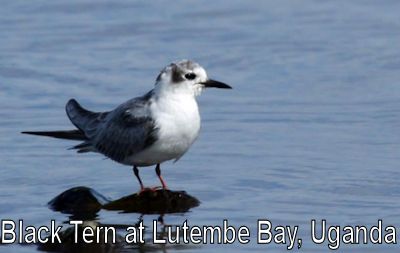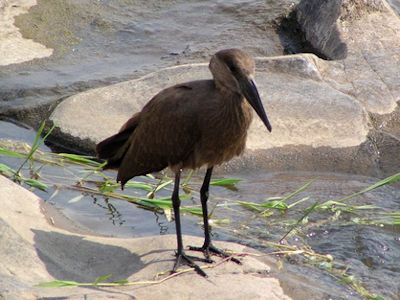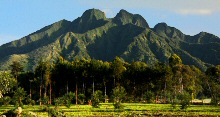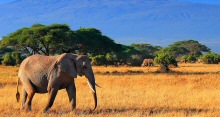 Located on the shores of Lake Victoria – the largest freshwater lake in Africa and second in the world is Lutembe one of the best places to watch large flocks of birds including native and migrant species coming from as far as Siberia in Northern Asia, the arctic regions including Russia, Europe, Denmark, Sweden and Norway. These migrant species stay at Lutembe for 9 months each year before returning to breed in Europe. You can visit this amazing Bay during our exciting Uganda Birding Safaris.
Located on the shores of Lake Victoria – the largest freshwater lake in Africa and second in the world is Lutembe one of the best places to watch large flocks of birds including native and migrant species coming from as far as Siberia in Northern Asia, the arctic regions including Russia, Europe, Denmark, Sweden and Norway. These migrant species stay at Lutembe for 9 months each year before returning to breed in Europe. You can visit this amazing Bay during our exciting Uganda Birding Safaris.
Birds at Lutembe Bay
More than 70% of the white winged black terns scientifically known as (Chlidonias leucopterus), gull-billed terns (Sterna nilotica) and black-headed gulls (Larus ridibundus) in the world are found at this Bay.
The greater cattle egrets
A long-toed plover
Hummer kops
Greater cormorant
Grey heron
7 of the internationally-threatened species including:
Papyrus yellow warbler
Papyrus gonolek
Shoebill
African skimmer
Great snipe
Madagascar Squacco, among others.
The largest biggest numbers of Palearctic birds that migrate into Africa can be seen at Lutembe Bay, among several other bird species.
Threats to the Lutembe Bay
There are a number of factors that are threatening this bird  haven as highlighted by Nature Uganda’s Executive Director Mr. Achilles Byaruhanga. Among these factors are:
haven as highlighted by Nature Uganda’s Executive Director Mr. Achilles Byaruhanga. Among these factors are:
- Encroachment on the Bay by people for different by human activity
- Poisonous agro-chemicals assumed to be leaking from the flower farms located nearby. According to a research conducted for more than 15 years, it has come to their notice that besides reducing the amount of fish within the Bay, continued damping of these chemicals will become toxic to the people especially living within this area.
- Water abstraction is another threat; in other wards it means lowering of water levels in the bay especially due to large quantities being drained for use on the flower farms within the area. water drainage posses a large threat of other vegetation colonizing the area since reduced water levels of water expose layers of mud which in turn will reduce the habitat and feeding space of these birds.
Why Lutembe Bay is Important to Europe’s Wildlife
The white winged black terns begin arriving in Uganda from Europe starting September and October annually and leave from February and March.
Every year, these birds come with their young-ones hatched in the season before. And as they return to Europe, they leave behind the hatchling so that they can practice breeding. During that period their white far changes to a completely black color – the change of their color is known as breeding – plumage. Once they are ready, these black ones fly to Europe, breed and later return to Lutembe when they have developed white far. For several centuries this has been their cycle.
According to Mr. Byarugaba in case Lutembe Bay is affected in anyway, Uganda’s tourism industry would greatly suffer and this effect would extend to Europe since the breeding pattern of these birds would be interrupted. And may be in case these birds don’t get another habitat similar to Lutembe, they may reduce in number.
For more information about Uganda Wildlife, visit adventureugandasafari.com












